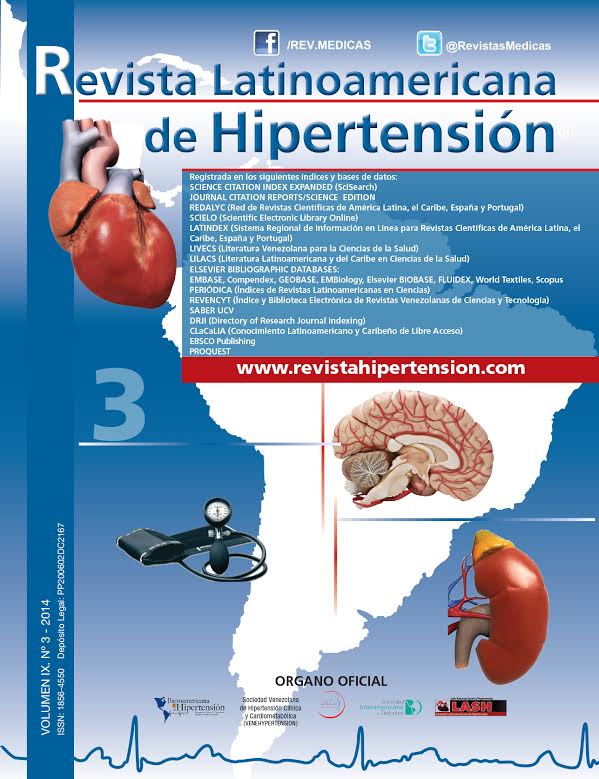Alcohol drinking patterns in the adult population from the Maracaibo municipality, Zulia - Venezuela
Palabras clave:
alcohol, drinking patterns, types of beverages, quantity of consumptionResumen
Background and Objectives: Alcohol consumption is awidely distributed practice worldwide with several dosedependent
effects on health. The magnitude of these
consequences is modified by cultural and sociodemographic
factors which shape behaviors towards this habit.
Therefore, the objective was to determine patterns of alcohol
drinking in our population.
Materials and Methods: Descriptive, cross-sectional
study with randomized, multi-staged sampling, which included
2,230 subjects of both genders. Monthly alcohol
intake was interrogated, from which daily consumption
was calculated in grams of alcohol and beverage volume
equivalents. Habitual drinking was defined as >1 g/
day. Results were expressed in medians and interquartile
ranges. Consumption patterns were classified by quartile
distribution and conglomerates for each gender and beverage
type, obtained through two-staged cluster analysis.
Results: Daily alcohol intake is higher in males than in
women, expressed in medians as follows: 28.4 g/day
(9.5-47.3) vs 10.4 g/day (3.8-28.4); p=4.67x10-43. From
the general population, 16.7% (n=196) of women and
45% (n=478) of men were habitual drinkers (χ2=220.185,
p<0.001). Beer was the most frequent type of beverage in
both genders (χ2=24.760, p=4.20x10-6). The largest percentage
of habitual drinkers was in subjects aged 18-29
years: 37.2% (n=73) of females; and 36.1% (n=413) of
males. Consumption categories were established for both
genders through quartile distribution, for females: ˂3.79
g/day, 3.8-10.41 g/day, 10.42-28.40 g/day and ≥28.41
g/day; for males: ˂9.53 g/day, 9.54-28.40 g/day, 28.41-
47.33 g/day and ≥47.34 g/day.
Conclusions: In our population, alcohol intake is greater
in males and younger subjects. Distinct sociocultural characteristics
render necessary the determination of population-
specific consumption patterns.
Key words: alcohol, drinking patterns, types of beverages,
quantity of consumption
Descargas
Los datos de descargas todavía no están disponibles.

